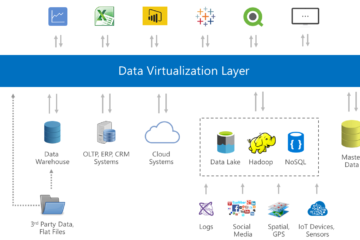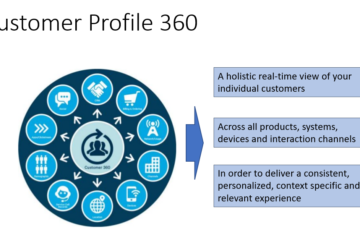Data Security Guidelines for Data Lakes in Large-Scale Corporations: Fortune 500 MNC Edition
Introduction:
As large-scale corporations manage vast volumes of data in their Data Lakes, ensuring robust data security becomes paramount. With sensitive information and potential risks involved, it is crucial to establish comprehensive data security guidelines. This article aims to provide a detailed set of guidelines specifically tailored for Data Lakes in large-scale corporations, such as Fortune 500 multinational corporations (MNCs). These guidelines will help organizations protect their data assets, mitigate risks, and maintain compliance in the ever-evolving landscape of data security.

1. Develop a Data Security Strategy:
- Identify Sensitive Data: Conduct a thorough assessment of the data stored in the big data lake and identify sensitive information, such as personally identifiable information (PII) or intellectual property. Categorize data based on sensitivity levels to prioritize security measures.
- Regulatory Compliance: Understand and adhere to relevant industry-specific regulations, such as GDPR or HIPAA, as well as regional data protection laws. Ensure data security practices align with compliance requirements.
- Data Classification: Implement a robust data classification framework to classify data based on sensitivity, confidentiality, integrity, and availability. Assign appropriate security controls based on the classification.
2. Access Control and User Authentication:
- Role-Based Access Control (RBAC): Implement RBAC to ensure appropriate access privileges based on job responsibilities. Regularly review and update access rights as roles change within the organization.
- Multi-Factor Authentication (MFA): Enforce MFA for all user accounts accessing the big data lake. This adds an additional layer of security, preventing unauthorized access even if credentials are compromised.
- Privileged Access Management (PAM): Implement PAM to control and monitor access to privileged accounts. Grant administrative privileges only to authorized personnel and regularly review access rights.
3. Data Encryption:
- Data-in-Transit Encryption: Encrypt data transmitted between components and nodes within the big data ecosystem using protocols such as SSL/TLS. Ensure end-to-end encryption for data moving between different systems.
- Data-at-Rest Encryption: Encrypt data stored within the big data lake to protect against unauthorized access. Utilize strong encryption algorithms and secure key management practices.
4. Secure Data Processing:
- Secure Coding Practices: Promote secure coding practices to mitigate the risk of vulnerabilities. Regularly train and educate developers on secure coding principles to minimize potential security flaws.
- Data Masking and Anonymization: Apply data masking and anonymization techniques to protect sensitive data during processing and analysis. Ensure that data used for testing or development purposes is adequately masked to prevent unauthorized exposure.
- Secure Data Transfer: Implement secure file transfer protocols (e.g., SFTP) when transferring data between systems or sharing data with external parties. Employ encryption and secure channels to protect data during transit.
5. Monitoring and Logging:
- Security Information and Event Management (SIEM): Deploy a SIEM solution to collect, analyze, and correlate security event logs across the big data ecosystem. Monitor for anomalies, intrusions, or suspicious activities to detect potential security incidents.
- Data Loss Prevention (DLP): Implement DLP solutions to monitor and prevent unauthorized data exfiltration or leakage. Define policies to identify and block sensitive data from leaving the organization’s network.
- Intrusion Detection and Prevention Systems (IDPS): Deploy IDPS to continuously monitor network traffic, detect and block malicious activities, and prevent unauthorized access to the big data lake.
6. Data Backup and Disaster Recovery:
- Regular Backup Strategy: Establish a robust backup strategy to ensure data availability and integrity. Regularly back up data within the big data lake, taking into consideration the frequency of data updates and criticality.
- Disaster Recovery Plan (DRP): Develop a comprehensive DRP that outlines procedures for data restoration, system recovery, and business continuity in case of catastrophic events or cyber-attacks. Regularly test the DRP to ensure its effectiveness.
7. Vendor and Third-Party Risk Management:
- Security Assessments: Conduct thorough security assessments of vendors and third-party providers before engaging their services. Evaluate their security practices, compliance with industry standards, and data protection mechanisms.
- Contractual Agreements: Ensure contractual agreements with vendors clearly define data security and privacy requirements, including access controls, encryption, and incident response procedures.
8. Employee Awareness and Training:
- Security Awareness Programs: Conduct regular security awareness programs to educate employees on data security best practices, privacy regulations, and the importance of safeguarding sensitive data.
- Incident Response Training: Provide training on incident response procedures to ensure employees are equipped to detect, report, and respond to security incidents promptly.
Conclusion:
For large-scale corporations like Fortune 500 MNCs, data security in Data Lakes is of utmost importance. By implementing the guidelines outlined in this article, organizations can establish robust data security measures to protect their valuable data assets, mitigate risks, and comply with regulatory requirements. However, data security is an ongoing effort that requires constant monitoring, adaptation to evolving threats, and regular updates to security practices. By prioritizing data security and adopting a proactive approach, large-scale corporations can safeguard their Data Lakes and maintain the trust of their stakeholders.


